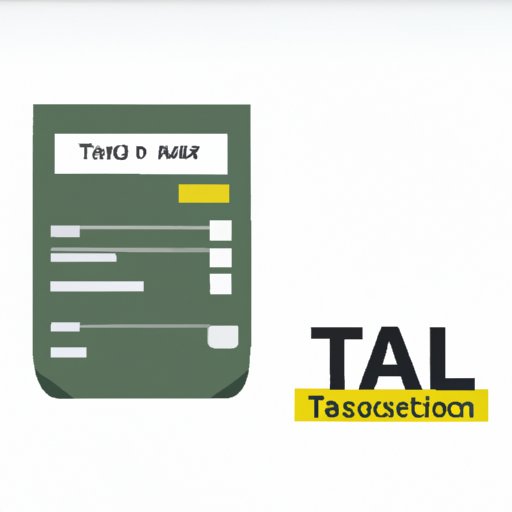Introduction
Sales tax is a type of consumption tax that is collected by the government on the sale of certain goods and services. It’s typically imposed at the state level, meaning that each state can set its own rates and rules. As a business owner, it’s your responsibility to understand the requirements in each state where you do business to ensure you are collecting and remitting the correct amount of sales tax.
Identifying Which States Require Sales Tax Collection
The first step in understanding your sales tax obligations is to identify which states you need to collect sales tax in. The best way to do this is to check the website of the state’s department of taxation or revenue. Each state has different requirements, so make sure to read the details carefully.
In addition to checking the state’s website, you should also be aware of nexus rules. Nexus refers to a connection between a business and a state that requires the business to collect sales tax from customers in that state. Generally, a business will have nexus if it has a physical presence in the state, such as a store location or warehouse. However, some states have begun to expand their nexus rules to include other activities, such as having affiliates in the state or selling products through a marketplace like Amazon or eBay.

Registering for a Sales Tax Permit
Once you have identified the states where you need to collect sales tax, the next step is to register for a sales tax permit. To do this, you will need to obtain the necessary forms from the state’s website and submit them along with any required documentation.
Each state has different registration requirements, so it’s important to review the information closely. Additionally, some states may require you to register in multiple locations within the same state if you have multiple business locations. Once you have submitted all the paperwork and the state has approved your application, you will receive a sales tax permit.

Calculating and Collecting Sales Tax
Once you have obtained your sales tax permit, the next step is to calculate and collect the sales tax from your customers. The rate of sales tax you must collect depends on the state and sometimes on the county or city. In most cases, you will need to use a combination of state, county, and city rates when calculating the total sales tax due.
It’s also important to understand any exemptions that may apply. For example, some states allow businesses to exempt certain types of items such as food or clothing. Additionally, some states may allow customers to provide a valid exemption certificate in order to avoid paying sales tax. Finally, you should keep accurate records of all sales tax collected, including copies of exemption certificates.
Filing Sales Tax Returns
Once you have calculated and collected the sales tax from your customers, the next step is to file sales tax returns. Most states require businesses to file sales tax returns on a monthly or quarterly basis. The filing deadline varies by state, so make sure to check the website of the state’s department of taxation or revenue for more information.
When filing your returns, you will need to complete the required forms and report the amount of sales tax you have collected. You may also need to provide additional information such as the number of transactions or the total sales for the period. Additionally, some states may require you to submit additional forms such as exemption certificates.
Paying Sales Tax Owed
Once you have completed your sales tax return, the final step is to pay any sales tax you owe. Most states offer multiple payment options, including online, by mail, or via wire transfer. Be sure to make your payment on time to avoid any penalties or interest charges.
Additionally, some states may offer payment plans or installment agreements for businesses that are unable to pay their full sales tax liability at once. Keep in mind that these payment plans usually come with additional fees and interest charges, so be sure to read the terms and conditions carefully before signing up.
Conclusion
As a business owner, it’s important to understand your obligations for collecting and remitting sales tax. Make sure to review the requirements in each state where you do business, and be sure to register for a sales tax permit, calculate and collect taxes, file returns, and make payments on time.
(Note: Is this article not meeting your expectations? Do you have knowledge or insights to share? Unlock new opportunities and expand your reach by joining our authors team. Click Registration to join us and share your expertise with our readers.)
